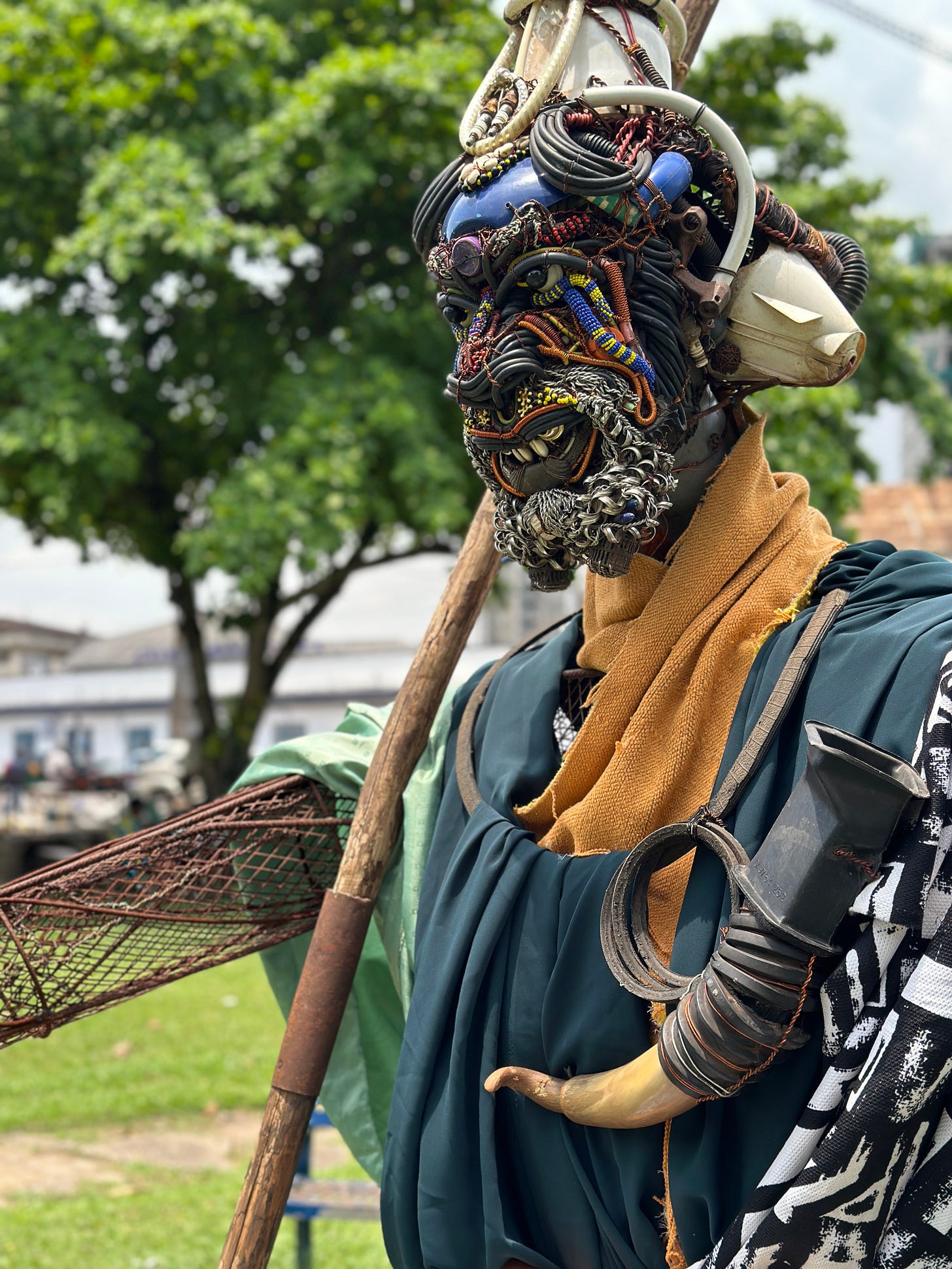Unfortunately, I didn’t catch the artist’s name, but the art in the Place du Gouvernment made its mark. I suspected that the texture and theme had inspirations from materials of meaning, be they recycled through time and culture or to dampen the dent on our carbon footprint. According to Cameroon’s Ministry of Environment, and the UNDP, the country “generates over 6 million tons of waste per year.” While that’s a ton of garbage (pun intended), for context, the USA “emerged as the largest waste producer per capita”, producing nearly 300 million tons annually. As I explored the colonial buildings and meandered the historic district of Douala, I slowly sipped my morning coffee which was handed to me wrapped in Saran wrap - their version of a cuppa ‘to-go’.
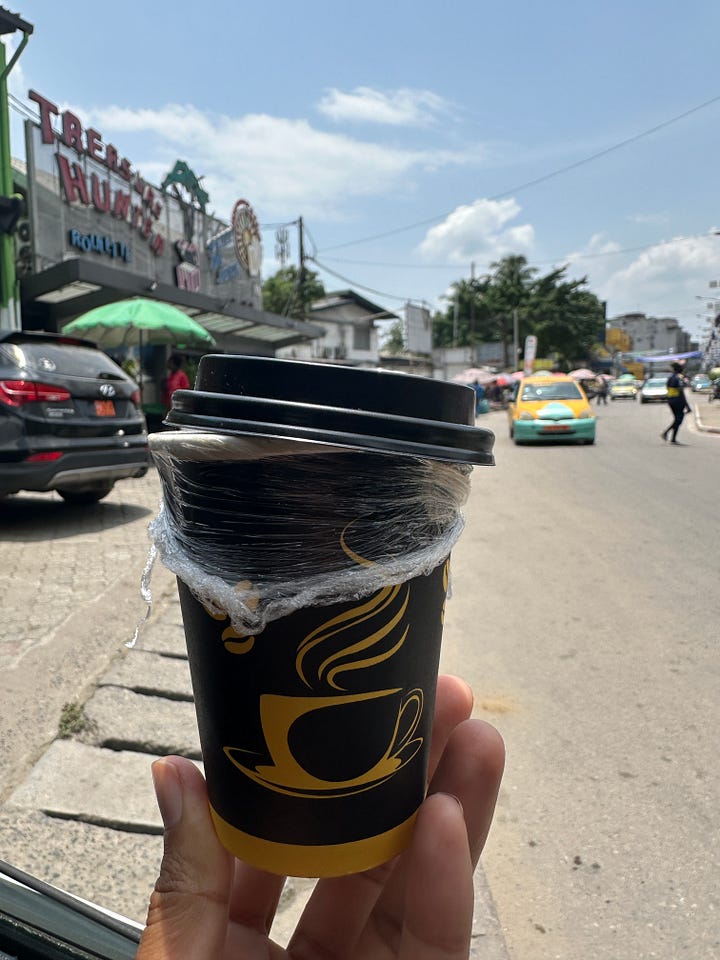
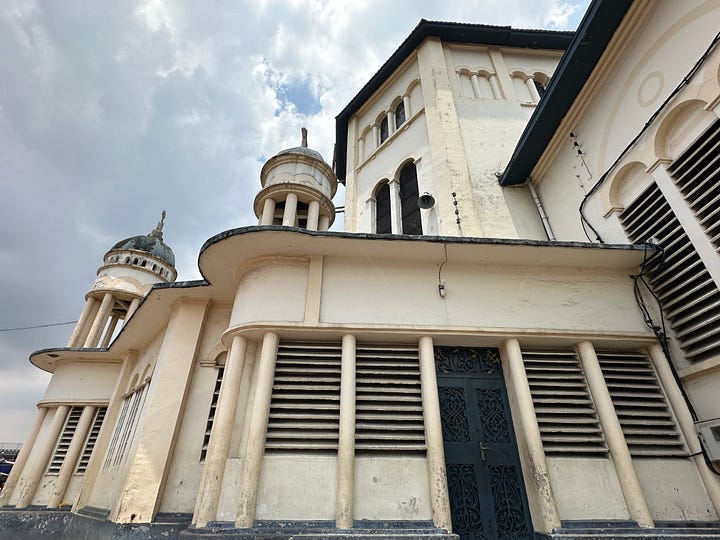
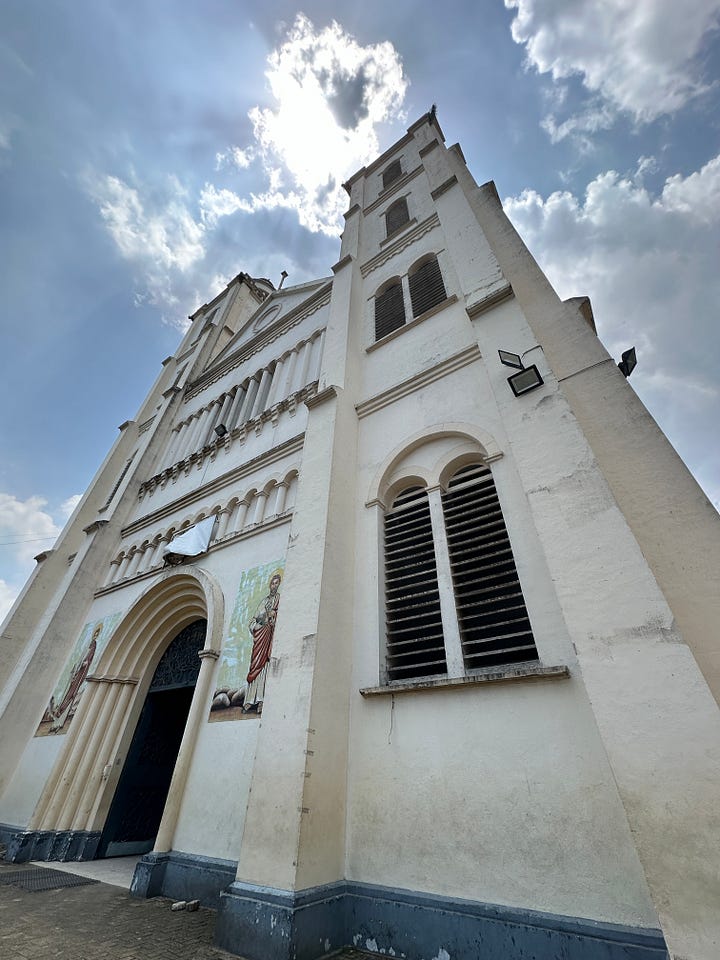

Perhaps it didn’t dawn on me that the plastic that was clinging to keep my caffeine from cooling, was once used as insoles for military boots, as a protectant from the elements from U.S. military planes or as upholstery in cars, as I later learned from the Harvard Business Review. Perhaps products like this deserves more of our attention and redirection.
Indeed there’s stuff that’s universally viewed as rubbish, then there are things of treasure and taste that somehow end up as waste. What fleeting fame!
Situated on the southeastern shore of the Wouri River estuary, the country’s political and economic capital is also home to the chief port of Cameroon. Comprising 120 districts, the colonial tenure has left a residue on culture here.

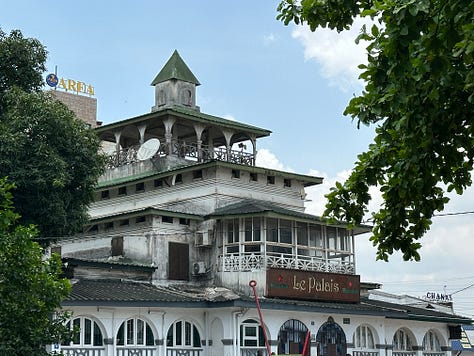
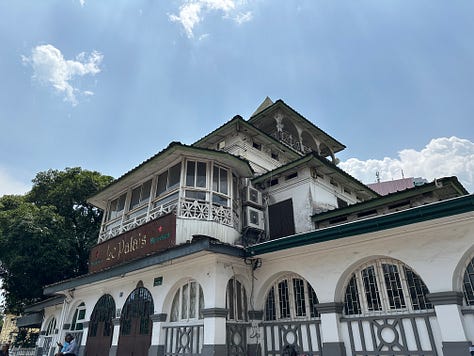
Le Palais, or the Palace of the Bell Kings, reminded me of those places of prominence and eminence, now looking like it was lazy to wave away disarray, like someone with malaria making meagre motions at mosquitoes. Maybe life here required makeshift responses though. Like the canopied bikers that even took to the sidewalks!


I crossed the street from the Palais de Justice, and was pulled into the park next to it. Arranged in a semicircle, these statues seemed to be conducting a conversation. In it, I saw past poised in the present and found it ironic that these pieces were made of things ousted.
Serge Binen, a native artist of Douala works to “give life to waste — all that’s rejected — plastics, metals, and wood.” Born in the swamps of New Bell, he recalls that “[e]ach time it rained, lots of waste flooded our neighborhood” which he shared, “pushed me to begin transforming it, in a bid to have a clean and less polluted environment.”
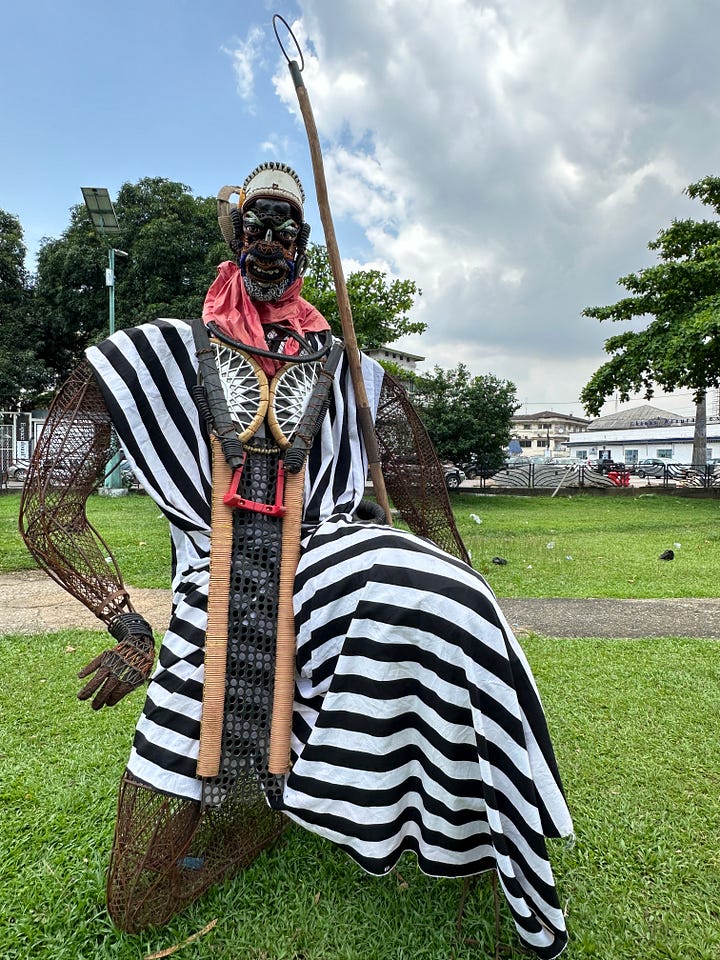
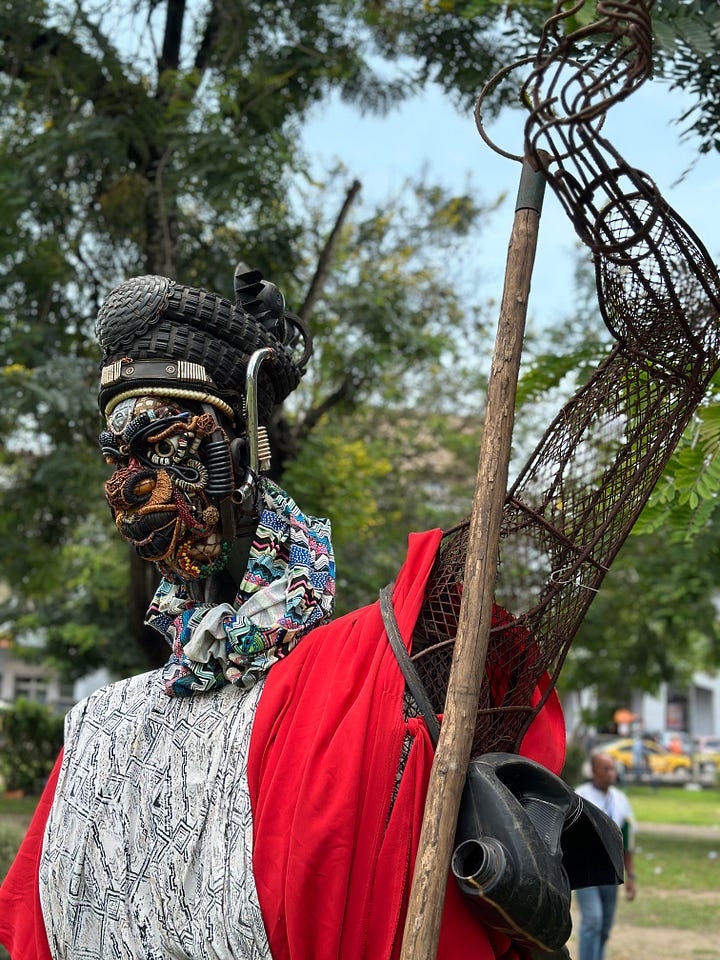
It’s mindboggling to think that the 2 billion tones of waste produced by the world is projected to raise to 3.4 billion by 2054. Moreso perhaps, is the World Bank's infographic which raises the issue of equity, since 90% of waste is mismanaged, and has sequalae, in low-income countries.
I wondered about the resources we’ve inherited. Be they tangible, renewable or vital, it seems that our planet - from Cameroon to Canada - is pushing the needle on this moral imperative.
As such, perhaps this is also an invitation for us to declutter, detach and deepen dedicated action to the lands on which we live. Noticing the nuances in these sculptures, from hoses, hardware, cloths and costume jewelry, I imagined what my own human statue was housing … and within that, which ones mattered in the Grand Scheme Of Things.
May we be more mindful of how our teapots, trinkets and things pile up,




